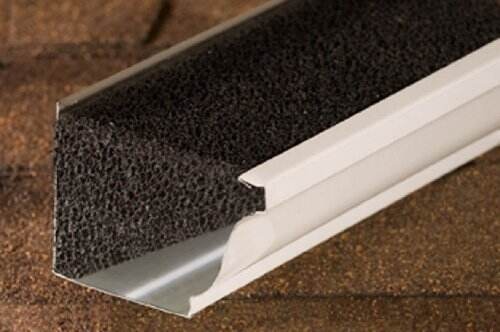
Gutter foam guards have gained popularity as an economical solution to protect homes from debris while allowing rainwater to flow freely. These triangular, arch-shaped foams, usually made from polyurethane or similar materials, fit snugly inside gutters, acting as a barrier against leaves and twigs. In this guide, we delve into the mechanics of gutter foam and explore its pros and cons, considering whether it’s the optimal choice for safeguarding your home.
How Does Gutter Foam Work?
Various brands of gutter foam exist in the market, but they generally function in similar ways. Installed manually into gutters, these foam guards create a filtering barrier that permits rainwater to pass through while capturing potential blockages. The specialized materials, such as UV-stabilized polyether, polyester, or polyurethane, enable this efficient water filtration.
Pros of Gutter Foam
- Ease of Installation: One notable advantage of gutter foam is its user-friendly installation. Homeowners comfortable with a ladder and basic tools can easily fit the foam guards into their gutters, cutting them to the required size with just scissors or a knife.
- Reduced Gutter Cleaning: While not a permanent solution, gutter foam guards can significantly decrease the frequency of gutter cleaning. By preventing the accumulation of leaves and debris, homeowners may find themselves spending less time on maintenance tasks.
- Cost-Effective: Gutter foam is a budget-friendly option, with low manufacturing costs translating into an affordable solution. Hardware stores often offer foam guards at prices as low as $2 per foot.
Cons of Gutter Foam
- Temporary Solution: Despite its initial cost-effectiveness, gutter foam is not a permanent solution. Exposure to sunlight and various weather conditions can make the foam brittle over time, leading to breakage and the need for replacement.
- Ineffectiveness in Heavy Rain: Gutter foam’s absorbent nature can be a downside during heavy rain. Once saturated, the foam may leak water, potentially causing damage to the property.
- Debris Buildup: Smaller debris, such as twigs and seeds, can still find their way into the small spaces of gutter foam. This accumulation may create an environment for mold growth or seeds to sprout, causing additional issues.
- Temperature Sensitivity: Gutter foam guards must be removed in freezing temperatures to prevent freezing and subsequent damage. Failing to do so may result in moss, mold, or weed growth once thawed.
- Fire Hazard: Some low-cost foam guards may pose a fire risk. It’s crucial to ensure that any material placed in the gutter is fire-retardant and complies with safety standards.
- Shape Distortion Over Time: Regular cleaning and removal of gutter foam can cause it to lose its shape. Once distorted, it becomes challenging to reposition correctly, potentially necessitating replacement.
While gutter foam presents an affordable option, it comes with notable drawbacks. Comparatively, LeafGuard offers an advanced solution that addresses many of these issues. Engineered to withstand heavy rainfall, prevent clogs, and require minimal maintenance, LeafGuard provides a durable, long-term solution for homeowners seeking reliable gutter protection.
Need a Gutter Guard Company in Long Island, NY?
Long Island LeafGuard Gutter Company specializes in a completely pre-engineered, fully integrated, leaf-free gutter system that we manufacture, distribute, and install for residential and contractors for their project needs. We provide one-piece seamless gutters that provide a clog-free guarantee, and we also supply topper gutters and protectors. Call us today for more information!




